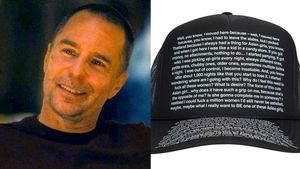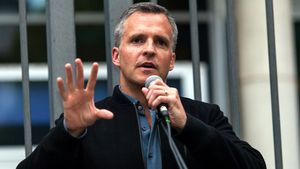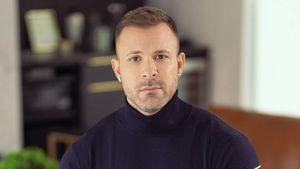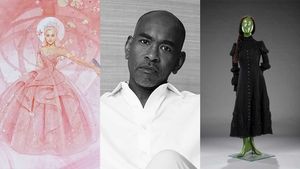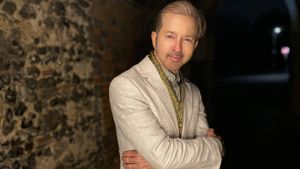
Every day more than 5,700 people contract HIV — that’s 240 new infections every hour. Worldwide, 35 million people live with the virus, which is nearly the population of California (that's about one out of eight people who live in the U.S.). But despite the increase in HIV infections, I’m not afraid of HIV. There, I said it.
Now, let me explain. I’m not afraid of HIV because I’m in control of my health and status. If I discovered I was positive, I would be anxious but definitely not afraid. The scariest part of a being HIV-positive would be battling stigma every day — not be the medical implications.
I’m a ’90s kid. I wasn’t born during the AIDS epidemic, but I’ve seen The Normal Heart and that experience was traumatic enough. During the 1980s and '90s, fearing HIV and AIDS was logical. But the ’90s are long gone, but sadly, with them went safe sex and proactive prevention. In a recent study at Yale University, researchers found that only 47 percent of its undergraduate students use condoms, and although Yale offers free HIV tests, 39 percent of those students had never been tested.
With advances in HIV testing like apps for smartphones (yes, there's an app for that), HIV infections should be declining, right? Wrong. From 2001 to 2011, new annual diagnoses among gay and bi men ages 13 to 24 increased by 132 percent. Those diagnoses sprouted in part from the stigma linked to HIV, which creates unnecessary angst around testing, prevents detection, and could be a factor in the surge of new cases.
Cultural intolerance about sex and sexuality (especially gay sex) creates shame, which in turn ignites social stigma. After 32 years, fear of the societal implications of HIV still prevents a majority of people from knowing their status.
Although HIV treatment has improved exponentially, the social, emotional, and cultural perceptions of treatment and prevention haven’t changed. Shame and stigma influence most all aspects of treatment and prevention, which ruthlessly hinders the effectiveness of the medical advances. In the past 30 years, our society twisted the view of having HIV into a lethal curse and that perception must change. Yes, without treatment this is a virus that can turn into something with fatal complications. But for the majority of people, that's not the case. For those on early proper treatment, your life will be as long as the next guy.
But you need to know what you're dealing with. Would you want to know if you had a non-fatal cancer, syphilis, or diabetes? Absolutely. Who wouldn’t? Still, inspiring awareness and erasing the stigma of this particular virus is proving to be incredibly challenging despite extensive media attention.
Last October, I contributed to a series titled “31 Days of PrEP” for The Advocate. It focused on the use of an antiretroviral medication, Truvada, in a strategy known as pre-exposure prophylaxis (or PrEP) by HIV-negative people to prevent infection. The articles sparked a lively conversation; some supported PrEP, while others boisterously opposed the idea of a one-pill-a-day preventive measure. Despite PrEP’s potential effects on the global AIDS crisis, people accused The Advocate of denying the importance of safe sex and the use of condoms.
Their reactions reflect another issue: Why are some so passionately against something that prevents the spread of a potentially lethal virus? I think that negative response was wholly a side effect of HIV stigma. By classifying HIV as a “gay disease” that promiscuous men contract, society stamped a “for dirty gays” label on all HIV-related treatment and prevention practices. Thirty years later, that label still affects our relationships with HIV-positive people and our ability to fight the spread of the disease.
We’re fortunate to live in a world where we can take a little blue tablet and reduce the risk of HIV infection by 99 percent. Unlike in the ’80s, today doctors can detect infections with a pinprick and fight illnesses with, in many cases, one combo pill a day. With early detection and superior treatment options, HIV is no longer a death sentence. With modern medicine by our side and a changed societal understanding, we can drive HIV to extinction. But before that can happen, we must kick the stigma and combat the prejudice directed toward people living with HIV.
As a millennial, I can proudly say that we’re opinionated, connected, and amazingly tolerant. Yet, somehow, we accepted the HIV stigma of the 1980s and the shame associated with a positive diagnosis. Obviously, we can’t forget the AIDS epidemic happened in the U.S. (and still exists abroad), but not accepting modern medical advances to prevent HIV is equivalent to not attending Pride because there was a police raid in 1969. To counter the increase in infections, we have to overcome the shame connected to HIV and educate new generations so that in the future people will feel proud to know their status, even if it’s positive.
I’m not afraid of HIV, because it’s preventable, detectable, and treatable. The stigma of the AIDS era needs to fade, and with a solid shove, we can all rise above the cultural shame and inspire each other to take action.
Levi Chambers is the Editor in Chief of Pride.com. You can follow him on Twitter at @LeviChambers.














